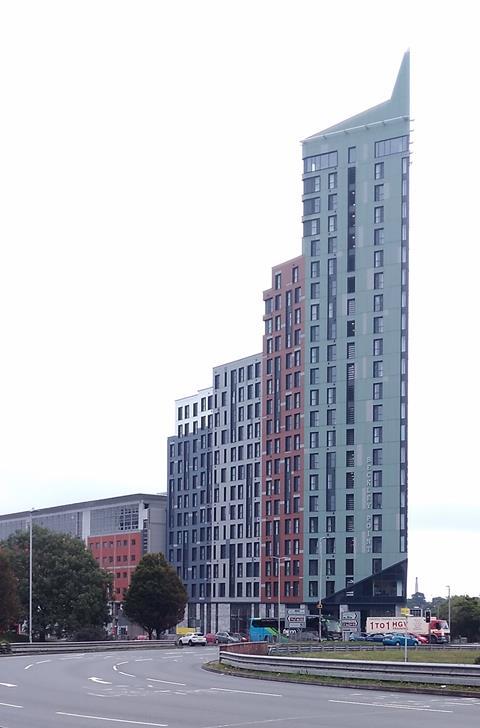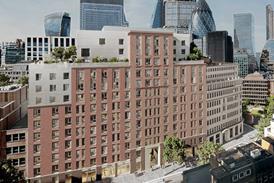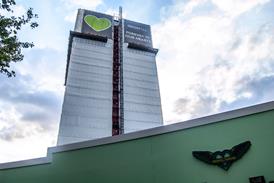Six of Britain’s worst buildings in the running for architecture’s wooden spoon

BD has unveiled the six contenders for the Carbuncle Cup, the award for Britain’s worst building. Our shortlist includes an eye-popping mix of architectural sins: wonky shapes, inexplicable combinations of form and materials, loud colours and lumpen shapes. Many of the contenders arrogantly stick two fingers up to the scale and architectural cues of their surroundings and in many cases can be seen from miles around.
Unsurprisingly, given the number of tall residential towers being built in London, there are two examples on the shortlist. Although Nine Elms Point has been singled out, the wider Nine Elms and Battersea area is becoming a regular fixture of the Cup. Further east, a crop of mediocre towers is sprouting up in Lewisham, part of a missed regeneration opportunity that includes an inhospitable road scheme and pitiful public realm.
There is another example of regeneration gone wrong in Salford, an awkward roof extension in Liverpool and an orange house in south London. Student accommodation makes it on to the shortlist for the sixth year running with a dismal example in Plymouth.
The shortlist was selected by a panel of judges consisting of BD editor Thomas Lane, BD’s architectural critic Ike Ijeh, architectural critic and author Jonathan Glancey and Rosemarie McQueen, commissioner for Historic England. Readers’ comments were also considered during the judging process.
The winner will be announced next Wednesday, September 5.
Carbuncle Cup 2018 shortlist
Lewisham Gateway, London by PRP Architects
Lewisham Gateway is a £375m urban regeneration scheme that includes the redesign of one of south London’s most notoriously inhospitable traffic gyratories.The first phase includes two residential towers and another two that are under construction. These towers embody all the lazy belligerence that sadly characterises the vast majority of tall residential blocks in the capital and they appear as curiously dislodged outposts from south London’s other mecca of high-rise regeneration mediocrity, Croydon. Bland, boxy and with some vaguely delinquent menace, the towers stand like a sneering street gang of four upturned middle fingers dumbly primed to hurl all manner of townscape obscenities at their unsuspecting environs.
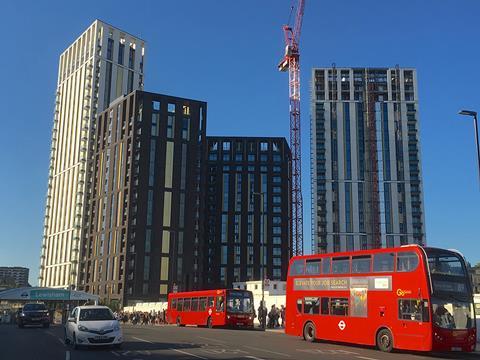
Haydn Tower, Nine Elms Point, London by Rolfe Judd
With at least three different types of cladding arranged in a messy stump of stacked vertical and horizontal stripes, this 28-storey residential tower is one of the most confusing and discordant buildings in Vauxhall, no mean feat among a sea of similarly dumb high-rise sentinels.
Our readers agreed, saying it looked like a series of “crooked chunks that are about to fall over” and a “hideous disjointed mess”. Is this really the kind of architecture that Vauxhall has to look forward to? Sadly, and for the fourth time of asking, Vauxhall’s loss is the Carbuncle Cup’s gain.
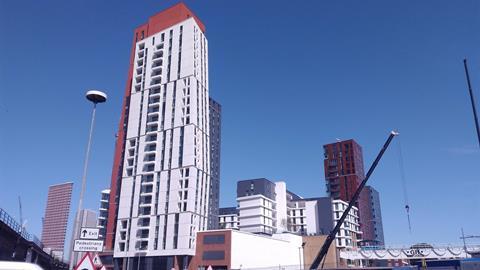
Southport’s new £45m leisure centre is one of the worst architectural responses ever conceived for Greater Manchester. An awkward row of disjointed boxes lines the M60, unhelpfully signalling Stockport’s aesthetic peril to motorists. All the boxes lean at alarming angles and are then sheathed in all manner of insalubrious multi-coloured cladding. One reader deemed it “the worst building on the entire planet”.
The scheme was championed by the local authority as a means to regenerate Stockport town centre. But a depressed town centre should not give free licence to create depressing architecture. Surely Stockport’s heart could be resuscitated with a better building than this?
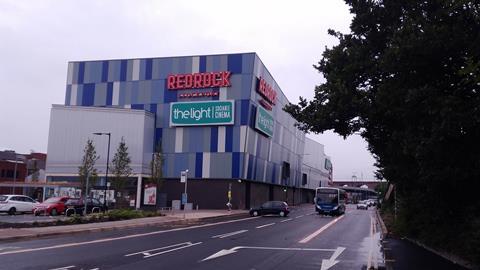
20 Ambleside Avenue, London by Pace Jefford Moore Architects
For some reason, the architects of this Passivhaus scheme in Streatham have opted for a single shade of red stock brick with matching pointing, orange guttering, tiles, shutters and gates, giving the house the appearance of a red-faced child who has said something gauche in a room full of grownups. The nominator described the building as “garish … blockish and a clumsy and alien blot on the streetscape”.
The exacting requirements of the Passivhaus standards necessitated small windows to prevent heat loss and shutters to reduce solar gains. Unfortunately the closed shutters combined with the defensive high front wall make it look more like an electricity substation than a home.
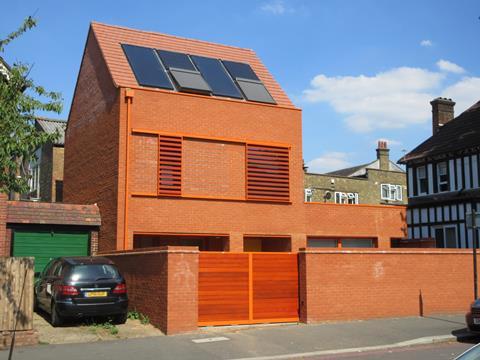
Shankly Hotel, Liverpool by Signature Living
This two-storey extension to an attractive historic building in the centre of Liverpool couldn’t be more out of keeping, said our judges.Where the original is gently curved with intricate classical detailing and vertical windows, the new structure is all abrupt right angles and bland horizontality. It looms awkwardly above its parent, stealing the show from what was meant to be the building’s crowning glory, a pretty little dome at its prow.
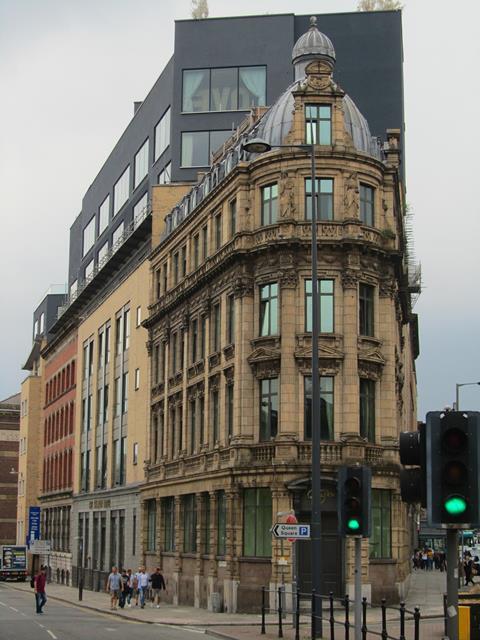
Beckley Point, Plymouth by Boyes Rees Architects
As many of Britain’s worst buildings tend to do these days, Beckley Point houses students. At 23 storeys and 78m high, it’s also the tallest building in the South-west.
The tower features vertical shafts of multi-coloured facades squashed together to form an awkwardly tapering ziggurat. The entrance crudely slapped onto the base is bad but even worse is the pyramidal spire that sprouts from the top like the traffic cones inebriated students are so fond of.
Worst of all is the wider townscape impact. Beckley Point is on one of the highest points in the city centre and can be seen from miles around.
